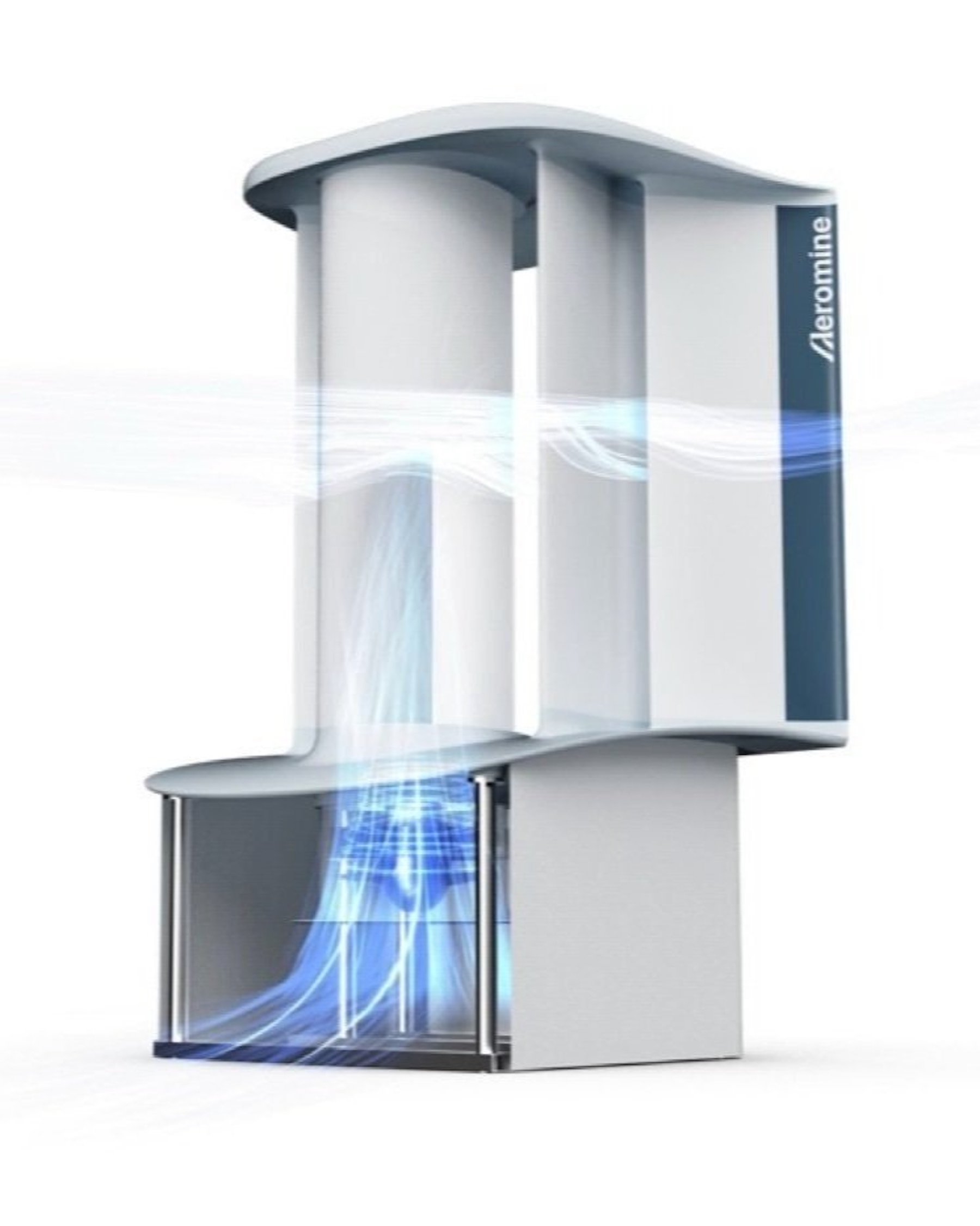A new type of wind turbine can pair well on roofs with solar panels, offering a double source of green energy generation for buildings.
The new turbine concept, by a startup called Aeromine, sits on the edges of roofs and has no visible blade. Instead, the devices draw in air between two airfoils. The flow of air turns a turbine inside the device.
The technology uses the aerodynamic effect of the wall below it to amplify the wind speed. Because the units sit on the edge of roofs, they leave plenty of room for PVs.
When the units are manufactured at scale, they’ll be cheaper than solar panels, producing 50% more energy at the same cost, the company says. A building could add batteries to store energy so that the combination of wind, solar, and batteries could make the building energy self-sufficient.
Aeromine sees its initial target market as commercial buildings such as warehouses with long flat roofs. The technology could also be used on apartment buildings. The company plans to launch the product by the end of next year.
Related Stories
| Aug 11, 2010
8 Things You Should Know About Designing a Roof
Roofing industry expert Joseph Schwetz maintains that there is an important difference between what building codes require and what the construction insurance industry—notably mutual insurance firm Factory Mutual—demands—and that this difference can lead to problems in designing a roof.
| Aug 11, 2010
Great Solutions: Green Building
27. Next-Generation Green Roofs Sprout up in New York New York is not particularly known for its green roofs, but two recent projects may put the Big Apple on the map. In spring 2010, the Lincoln Center for the Performing Arts will debut one of the nation's first fully walkable green roofs. Located across from the Juilliard School in Lincoln Center's North Plaza, Illumination Lawn will consist ...
| Aug 11, 2010
AIA Course: Enclosure strategies for better buildings
Sustainability and energy efficiency depend not only on the overall design but also on the building's enclosure system. Whether it's via better air-infiltration control, thermal insulation, and moisture control, or more advanced strategies such as active façades with automated shading and venting or novel enclosure types such as double walls, Building Teams are delivering more efficient, better performing, and healthier building enclosures.







